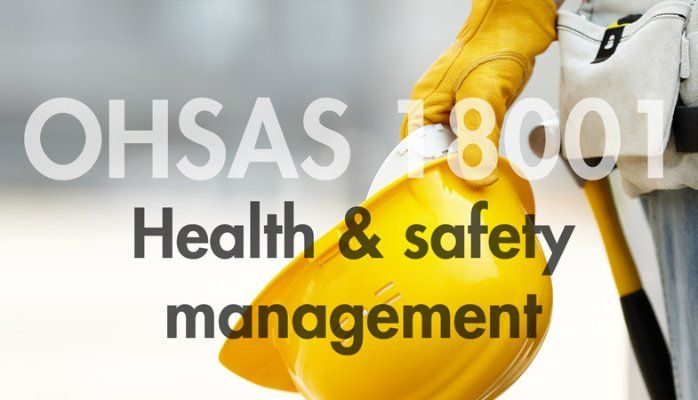That is a key responsibility of businesses across all sectors when it comes to their workplace safety. Businesses have the duty to safeguard their workers from hazards at work and also meet national or international health and safety legislations. The OHSAS 18001 certification was one of the most well known safety management systems that enabled organizations to develop systematic processes of their occupational safety.
Introduced as OHSAS 18001, this certification in 2007 revised workplace safety standards for the fullest realization. Despite its widespread use by companies it was certified officially to replace with ISO 45001 in 2018.
In this article, we will delve into what OHSAS Certification is, how it assisted companies in improving their safety and ultimately, what caused it to be phased out.
OHSAS Certification: What is it
The OHSAS certification was designed as a standard to offer companies a built-in framework for managing workplace health and safety. It was a non-legally requirement but many companies are certificated due.
Fewer workplace accidents and injuries.
Improve full safety.
Employee Trust your Workplace Safety Confidence .
Adhere to national and international safety laws.
For high hazard environments we took model through
- Construction : Workers are fighting issues such as falling objects, machinery injury and structural collapse.
- Factories – The major threats to factories consist of heavy machinery operations, hazardous chemicals exposure and fires.
- Oil and gas – Operations have risks including gas leaks, explosions, and equipment failures.
- Health care — People are exposed to biohazards, expose oneself to patient related injuries and biological containing substances.
Thanks to the OHSAS certification, companies implemented safety policies that went much beyond traditional defense mechanisms, thus creating proactive programs for employee welfare and reducing financial losses brought on within workplace accidents.
OHSAS 18001 Certification Explanation
OHSAS 18001 certification gave companies a mechanism to be able to properly identify and manage workplace risks. It was designed to:
- Help companies identify possible threats to their facility and operations.
- Minimize employee or visitor risks.
- Adhere to international and local safety laws.
- Improve the general working environment.
OHSAS 18001 was different from most workplace safety laws in that it was voluntary. But when companies adhere to this certification, they experience lesser accidents, less operational risks and better legal compliance.
What made a company adopt OHSAS 18001?
Adoption of an OHSAS 18001 Certification Wouldn’t Be Mandatory By Many Organizations (But It Should Be)
- Legally Compliant (though not forced): most businesses opted for OHSAS 18001 to meet safety laws.
- Reputation Considerations: certified businesses eerie considered a post responsibility to their employees, upper management and clients.
- Operational Efficiency: Organizations with well-defined safety policies were less affected by accidents and litigation.
OHSAS 18001 Certification Essentials
Companies undertaking OHSAS 18001 had to implement, and hence:
Risk Identification: Workplace Hazards Appraisal.
Hazard Control Measures: Developing methods to eliminate and/or reduce risks.
Legal Compliance- To ensure compliance with national and international safety laws.
Employee Training( This includes informing your workers about the safety rules and regulations.)
Incident Reporting: Customized tracking and analysis of work-related accidents.
They increased safety awareness, decreased work-related incidents and retained a great safety culture amongst the companies.
What Happened to OHSAS 18001:2007 Certification?
2007 Revision: OHSAS 18001 Standard Tightened Safety Requirements
2007 Revision: OHSAS 18001 was revised so that it became stricter on safety problem In the followed version, which is called OHSAS 18001: 2007 it has been :
More effective risk assessment techniques- Companies were required to check risks at regular intervals.
Compliance with laws was stronger – firms needed to keep their safety compliance evidence.
Employee Involvement Raised Workers were urged to report problems and safety suggestions.
Enhanced supervision and audits – Companies were required to follow up on safety performance; development.
The improvements were critical in allowing businesses to combine OHSAS 18001 with other management systems like ISO 9001 (quality management) and ISO 14001 (environmental management).
Why Was OHSAS 18001 Discarded?
It might have been effective, but OHSAS 18001 had its deficiencies
Passive Approach — based on controlling hazards after they had been identified, not avoiding them in the first place.
Company’s management not required to take a lead role sometimes in safety management — Manger has limited role.
Employees participated minimally-There were few opportunities for employees to contribute feed-back on safety strategies.
So the International Organization for Standardization (ISO) came up with ISO 45001 in 2018 to replace OHSAS 18001 to tackle these issues.
The main differences between OHSAS 18001 and ISO 45001
ISO 45001 offered an improved, more focused health and safety protection as per lean. Comparison to OHSAS 18001.
| Feature | OHSAS 18001 | ISO 45001 |
| Approach. | Hazard control oriented. | Preventative for risk. |
| Leadership Involvement. | Not required. | Need to be a manager. |
| Employee Participation. | Limited. | Employees have a large say in keeping safety plans up to date. |
| Integration with Other Standards. | Standalone system. | Compatible with ISO 9001 and ISO 14001. |
| Risk Management. | Primarily hazard reduction. | Prioritizes and eradicates risks from surfacing. |
Since ISO 45001 is more about the prevention of risks, this translates into a far better and proactive safety system in business.
How Businesses went from OHSAS 18001 to ISO 45001
From the year that ISO 45001 came into place in 2018 companies who held certifications of OHSAS 18001 had a three year transition time.
How to Make The Transition to ISO 45001:
- Check Existing Safety Policies – Find differences between OHSAS 18001 and ISO 45001.
- Management Engagement Increase — management needs to be involved in workplace safety.
- Train Staff — Employees need to be educated about new rules for safety and what steps they have in case something is still wrong.
- Conduct Internal Audits – Businesses should also examine the risks under the new standard.
- Perform External Audits – Certified organizations are obligated to have ISO 45001 audits to confirm.
Why Certification is Important for Businesses
OHSAS 18001 to ISO 45001 companies enjoying the following multiple benefits, later transitioned:
Fewer workplace accidents – Well structured safety systems minimize injuries in case they do happen.
Cheaper: lowers medical costs and claims as there are less accidents.
Stronger reputation: Customers and employees will trust businesses that take safety seriously.
Better compliance – The waiting game is not needed, certified companies no longer have to worry about being penalized for working in unsafe environments.
Following a systematic safety process, businesses ensure the safety protection of their workers while increasing worker productivity and operational effectiveness.
Certification Maintenance
After the company gets certified then company must keep into keeping compliance by:
Internal audit periodically.
Safety Policy updated .
Providing continuous employee training.
Leadership commitment.
Non-compliance could mean losing your certification and all of your business , as well as reputation.
Final Thoughts
For a long time OHSAS 18001 enabled organizations to progressively build systematic safety management systems in place. Yet, ISO 45001 finally incorporates a better, firmer and international stand of safety at work.
Transferring businesses from OHSAS 18001 to ISO 45001 have resulted in an actualized, improved workplace safety process which has prevented risks and ensured the well being of employees.
FAQs
OHSAS 18001 is still valid?
- No it got changed by ISO 45001, in the year concluded with August 2018.
Why did OHSAS 18001 fall out of favor?
- It was on hazard management instead of risk prevention.
How can the ISO 45001 Certification the companies can go?
- By doing risk assessments, educating employees and passing external audits.








